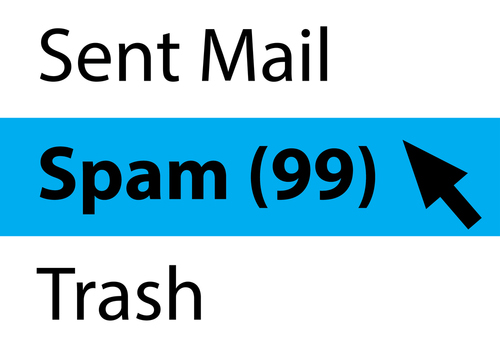According to recent research, one in every six emails sent by brands are lost before they even reach their intended recipient.
The introduction of Gmail’s segmentation tool, which I analysed previously, has had a particularly damning effect as over 90% of commercial mail is going straight to the promotions tab. This is legitimate mail, requested by the recipient – it’s not spam. So reducing the visibility to the user is tantamount to commercial censorship on Google’s behalf.
The user benefits of tabs in Gmail are debatable. From a functional perspective I have always been sceptical of the value they offer to consumers. The value it adds in terms of filtering, it loses in the time it takes to have to constantly tab through to check for items that you would have wanted to see directly in your inbox. This can be seen as nothing other than an approach to drive user attention away from email advertising and is therefore anti-competitive in nature.
Brands are undeniably under pressure. According to the Radicati Group’s Email Statistics Report, 2013-2017, there were 3.9 billion email accounts in 2013, which is set to rise to over 4.9 billion email accounts by the end of 2017. Google filtering does have benefits in empowering customers to take better control of their inboxes but at the same time it prevents them, in some cases, from interacting with content they actually want receive and engage with.
So apart from Google’s commercial filtering tactics, how else can you ensure you get through to your users?
Here are ten ways to avoid commercial email censorship:
1. It used to be about keeping your lists clean. If you keep your data clean and get rid of old data, make sure you clean it of bounces too. Whilst data cleansing hasn’t disappeared, clean lists aren’t enough anymore, especially in the age of ISPS user positive filtering. If people aren’t opening and engaging with your email, your deliverability is likely to be affected.
2. The best way of increasing deliverability is by putting effort into finding out what your customers want to receive and then making sure you use that content in your communications. Where possible avoid incentivised acquisition to ensure your data is the best it can be. Good data will result in efficient email campaigns.
3. Including personalised content, not just first name targeting, delivers on average a 60% increase in performance. Generating more openers doesn’t just help with deliverability, it helps with engagement and builds relationships with your audience.
4. Having a preference centre, in my opinion, is also critical. If you ask people what they want they will engage with you when you give it to them. Without a preference centre, you can’t possibly know what your audience wants, and therefore you are shooting blind. Give people what they ask for and they will take ownership of it.
5. Inviting users to feedback on your content or change their preferences directly from the email will foster continuous engagement and ensure your data does not go stale. Preferences can soon become irrelevant if your customers don’t update their details. If you use surveys on a regular basis and show users how you have changed content to reflect their wishes, you will ensure they stay engaged for longer.
6. By using trigger based emails based on events, you can make your communications more contextual to the immediate needs of the user and ultimately drive a higher open rate. When building deliverability on a new mailing IP or channel, use trigger messages to help you drive 50%+ open rates, this will help warm up your channels.
7. Increase email validation by using double opt-in for certain promotions. Alternatively, use give-aways to drive up open and click rates and encourage people to look into the commercial mail folders.
8. Use email to offer your users something they cannot get elsewhere. Voucher codes that only come via email provide a great incentive to get people opening and engaging with your communications.
9. Use other communication methods to encourage email engagement. Social media can be great for driving interest towards timed email promotional events, as well as guiding new users to register to receive your communications.
10. Commercial filtering adds a layer to the already difficult task of encouraging engagement through email advertising, but by ensuring you are targeting the right people with the right message, and encouraging a relationship, you are far more likely to succeed.






